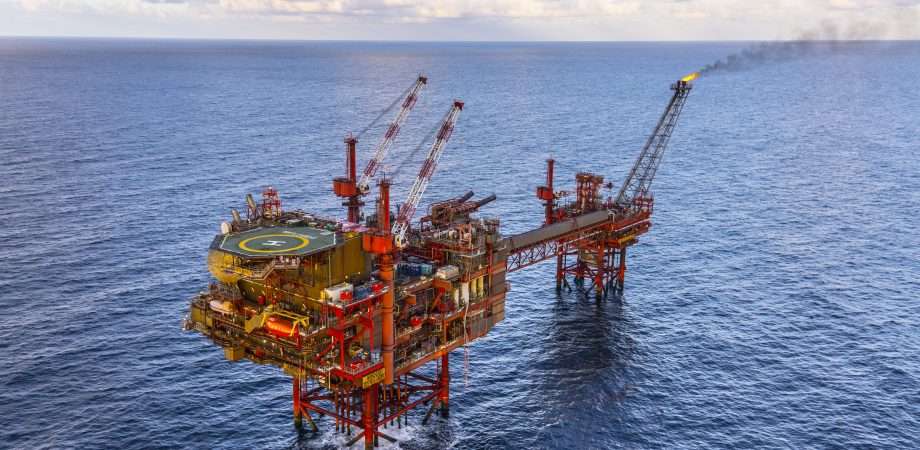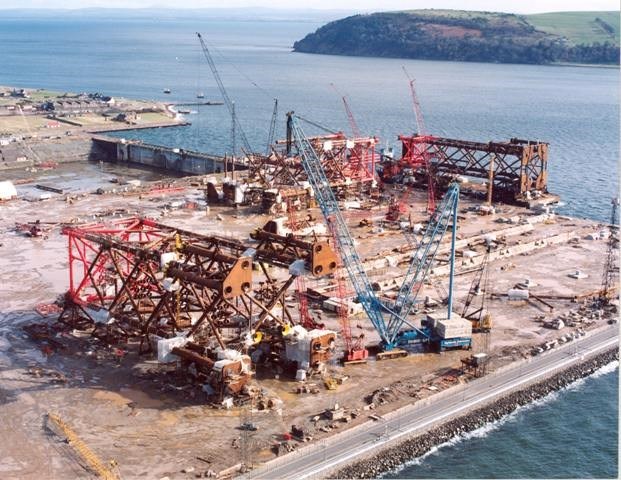
On 12th May, we celebrated 30 years since first gas was received at our CATS terminal on Teesside back in 1993. (Read the full story here)
CATS, or Central Area Transmission System, transports and processes over a quarter of all UK gas production, from 30 producing fields in the Central North Sea. CATS comprises a riser platform, a 404km pipeline and the terminal.
Here, in the first of three features showcasing each vital individual element of CATS, we put the riser platform in the spotlight and recognise its evolution through the years to become the safe, high-performing, critical asset it is today.
The CATS Riser Platform (CRP) is located at the north end of the CATS pipeline, in the Everest field in Block 22/10a of the Central North Sea. It sits approximately 145km east of Aberdeen and is linked by a 90-metre long physical bridge to the North Everest (NEV) platform. The CRP is a gathering station for natural gas and condensate from a number of fields, and from there the gas is transported through the CATS pipeline to the CATS terminal. Power generation, utilities and living accommodation are located on the NEV platform, along with the North Everest wells, processing and gas export equipment.
NEV and the CRP were some of the first assets in the UKCS designed and constructed under a revolutionary industry-wide programme in the early 1990s known as CRINE – Cost Reduction Initiative for the New Era. The main objective of a CRINE facility was to achieve 30% or more savings in capital costs, and to reduce operating costs by up to 50% once in production. Put simply, this meant the platform was built as cost-effectively as possible without adversely impacting safety or the environment, and when constructed it had accommodation for just 40 people.
Today, the CRP and NEV platforms are operated by Harbour Energy as a Combined Offshore Facility. However, the CRP’s ownership and operatorship have changed hands several times over the years.
Timeline of the CATS Riser Platform
1982 Everest field discovered by Amoco
1991/2 CRP installed and commissioned (operated by Amoco)
1993 CATS first gas (all CATS assets operated by Amoco)
1998/9 bp becomes CATS operator following merger with Amoco
2009 BG takes over field operatorship following asset swap with bp; bp retains operatorship of CRP, pipeline and terminal; BG retains non-operated interest in CATS
2014 Kellas buys BG’s non-operated interest in CATS
2015 Kellas acquires bp’s interest in CATS to become operator; appoints Wood as CATS terminal operating partner
2017 Chrysaor (now Harbour Energy) acquires Everest field
Our partner’s perspective
Andrew Grant is Harbour’s Operations Superintendent and the primary focal point for Kellas’ interactions with Harbour. His journey with the NEV/CRP began in 2008 as a process engineer so he has a huge amount of experience with the asset. We asked him where he has seen the greatest improvements on the platform in recent years:
‘Without a doubt, number one is asset integrity and staff safety. To ensure this always remains the case, we’ve made a conscious decision to increase the number of personnel on the asset to inspect, repair and maintain the fabric of the NEV/CRP.
Everyone on the asset works incredibly hard, and naturally with more inspections being carried out, we catch issues more quickly. The positive to this is that we are finding and fixing issues before they escalate and impact operations.
We are also making great strides in tackling our maintenance backlog by putting in place new and improved maintenance strategies that ensure we address the right activities with the right frequency.
We are carrying out campaigns to better manage related maintenance tasks in a more cost-effective manner. The upshot of improving asset integrity and reducing maintenance backlog has been an improvement in performance – preventing shutdowns that would be caused by loss of containment or damaged equipment directly leads to improved uptime.
Of course, none of these improvements would have been possible without the strong relationship that’s been developed over the years involving BG, then Chrysaor, and now Harbour and Kellas. We have worked hard to really strengthen how we collaborate. Kellas makes regular offshore visits to the NEV/CRP which, as the operator, I find invaluable as they give us a fresh set of eyes and challenge us to constantly strive for better. Also, each year we hold one of our quarterly meetings at the CATS terminal which helps the relationship between ourselves at the CRP end, and Wood as the pipeline and terminal operator.”
CATS today
The CATS system serves over 30 producing fields in the Central North Sea connected via a series of production hubs. In 2022, it delivered more than 9bn standard cubic metres of gas to UK markets, safely and reliably – the equivalent of providing heating to millions of households. And in early 2023, CATS demonstrated its steadfast commitment to safety by achieving 20 years without a lost time incident.
The CATS terminal on Teesside is poised to play a crucial role in helping the UK achieve net zero. It is also the site for our H2NorthEast project to build a 1GW low carbon hydrogen production facility. Co-located with CATS to leverage synergies, H2NorthEast will provide as much as 10% of the UK’s target 10GW hydrogen production by 2030.

NEV-LOM-CRP during construction
6th Floor, The Capitol
431 Union St
Aberdeen
AB11 6DA
Tel: +44 (0) 1224 084520
To report a pipeline emergency please call +44 (0)1642 546404 and ask for the Operations team.